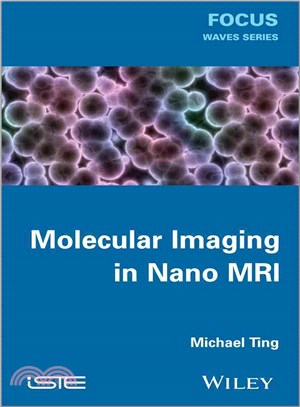 資料來源:
三民書局
資料來源:
三民書局
Molecular Imaging in Nano MRI / Michael Ting.
- 作者: Ting, Michael.
- 其他題名:
- Focus series (ISTE-Wiley)
- 出版: London :Hoboken, N.J. : ISTE ;John Wiley & Sons c2014.
- 叢書名: Focus series
- 主題: Magnetic resonance imaging--Computer programs. , Nanoscience. , Nuclear magnetic resonance--Computer programs.
- ISBN: 9781848214743 (bound): NT1983 、 184821474X (bound)
- 一般註:Includes bibliographical references and index. Cover; Title page; Contents; Introduction; Chapter 1. Nano MRI; Chapter 2. Sparse Image Reconstruction; 2.1. Introduction; 2.2. Problem formulation; 2.3. Validity of the observation model in MRFM; 2.4. Literature review; 2.4.1. Sparse denoising; 2.4.2. Variable selection; 2.4.3. Compressed sensing; 2.5. Reconstruction performance criteria; Chapter 3. Iterative Thresholding Methods; 3.1. Introduction; 3.2. Separation of deconvolution and denoising; 3.2.1. Gaussian noise statistics; 3.2.2. Poisson noise statistics. 3.3. Choice of sparse denoising operator in the case of Gaussian noise statistics3.3.1. Comparison to the projected gradient method; 3.4. Hyperparameter selection; 3.5. MAP estimators using the LAZE image prior; 3.5.1. MAP1; 3.5.2. MAP2; 3.5.3. Comparison of MAP1 versus MAP2; 3.6. Simulation example; 3.7. Future directions; Chapter 4. Hyperparameter Selection Using the SURE Criterion; 4.1. Introduction; 4.2. SURE for the lasso estimator; 4.3. SURE for the hybrid estimator; 4.4. Computational considerations; 4.5. Comparison with other criteria; 4.6. Simulation example. Chapter 5. Monte Carlo Approach: Gibbs Sampling5.1. Introduction; 5.2. Casting the sparse image reconstruction problem in the Bayesian framework; 5.3. MAP estimate using the Gibbs sampler; 5.3.1. Conditional density of w; 5.3.2. Conditional density of a; 5.3.3. Conditional density of x; 5.3.4. Conditional density of 2); 5.4. Uncertainty in the blur point spread function; 5.5. Simulation example; Chapter 6. Simulation Study; 6.1. Introduction; 6.2. Reconstruction simulation study; 6.2.1. Binary-valued x; 6.2.2. {0, 1}-valued x; 6.3. Discussion; Bibliography; Index.
-
讀者標籤:
- 系統號: 000252082 | 機讀編目格式
館藏資訊

For nano MRI to fulfill its potential as a 3-d imaging technique that can visualize the atomic structure of molecules, it is necessary, in terms of the image processing, to consider the reconstruction
摘要註
The authors describe a technique that can visualize the atomic structure of molecules, it is necessary, in terms of the image processing, to consider the reconstruction of sparse images. Many works have leveraged the assumption of sparsity in order to achieve an improved performance that would not otherwise be possible. For nano MRI, the assumption of sparsity is given by default since, at the atomic scale, molecules aresparse structures. This work reviews the latest results on molecular imaging for nano MRI. Sparse image reconstruction methods can be categorized as either non-B.